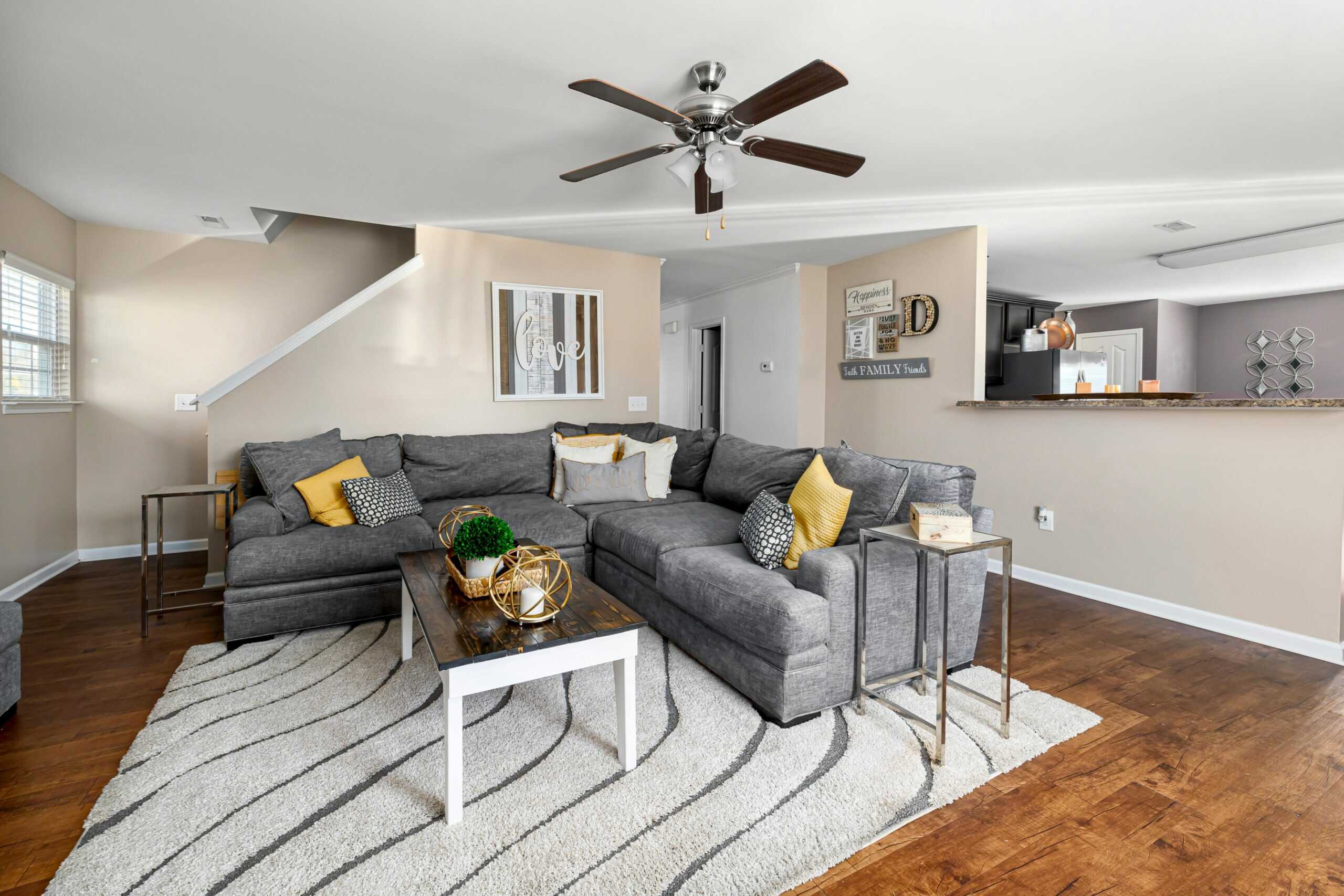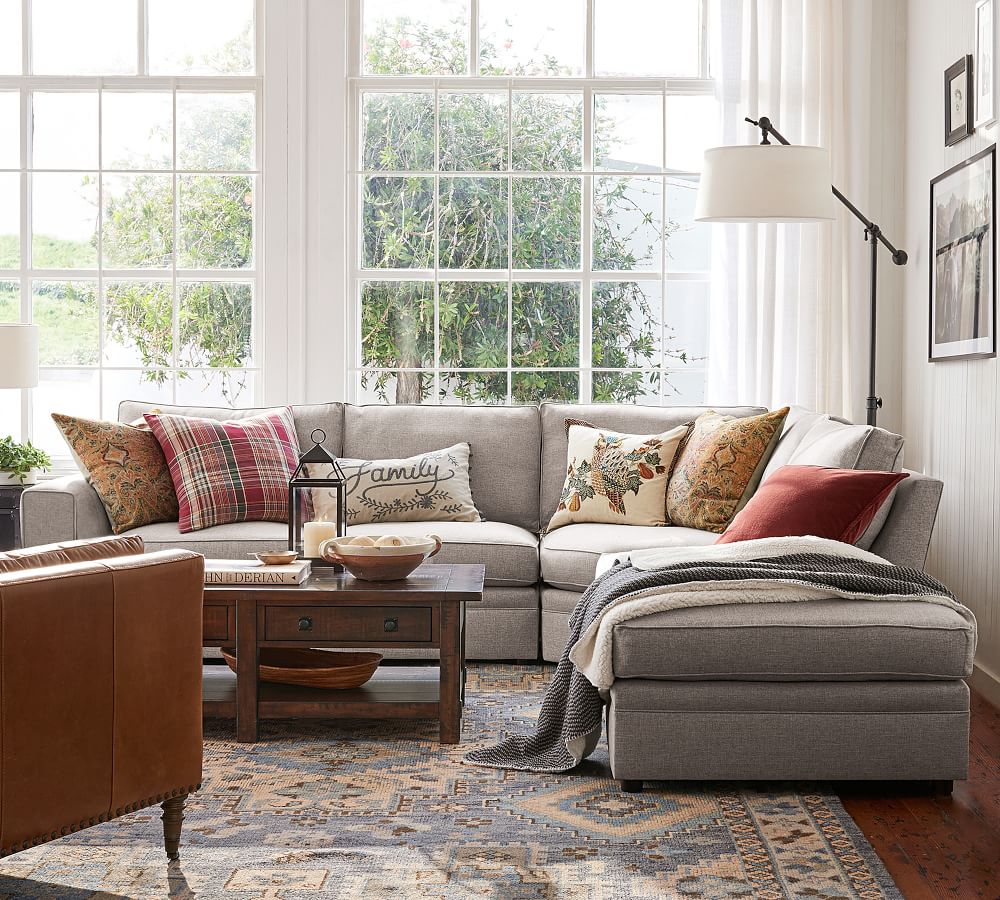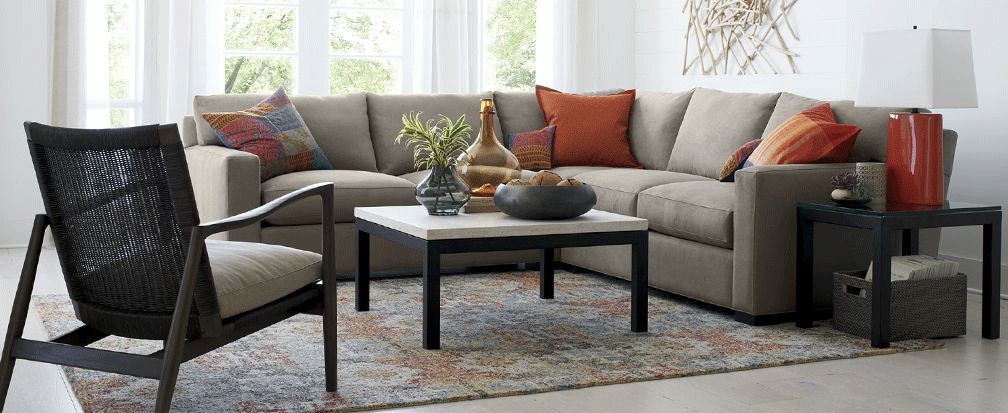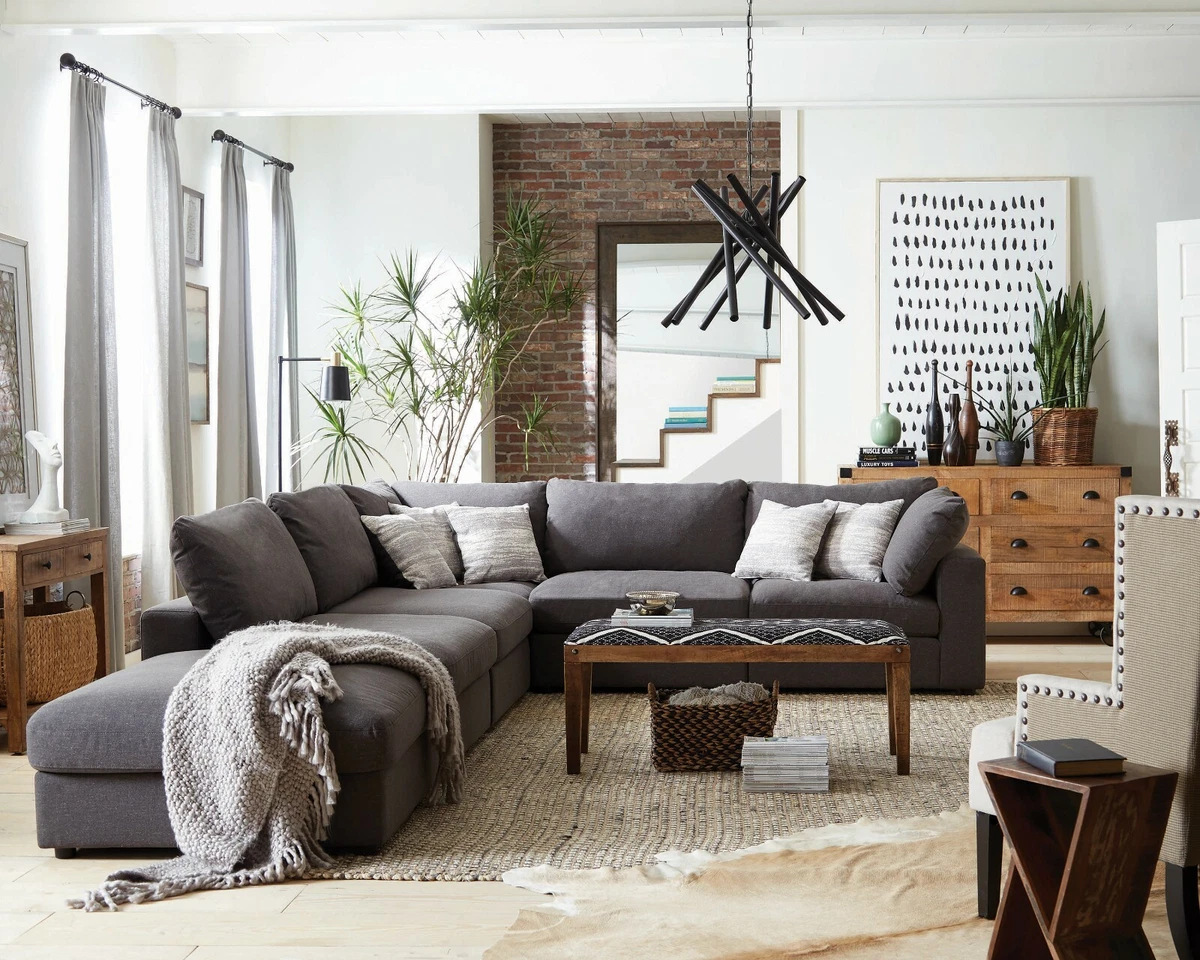When it comes to arranging a living room, a sectional couch is essential for both utility and aesthetic appeal. One important factor is the sectional’s facing direction, which might be left or right. This article compares left-facing and right-facing sectionals to help you make an educated selection.
By investigating the qualities, benefits, and aspects to consider, we will learn how facing orientation affects room layout, flow, and overall design. Understanding the variations between left-facing and right-facing sectionals is critical for improving balance, optimizing space, and creating a warm atmosphere.
What Is a Left-Facing Sectional?
Image Source: gatesfurniture.com
Left-facing sectionals (LAF) sectional, also known as a sectional facing left, is a type of sectional sofa in which the longer length of the couch is on the left side while standing in front of it.
There are several designs of left-facing sectionals, including reclining, curved, modular, and L-shaped. They are great for a variety of room sizes and are particularly well-suited to bigger areas, providing additional seats and a sense of openness. To improve living room comfort and relaxation, match these sectionals with a coffee table, ottoman, or chaise lounge.
Advantages of the Left Arm Facing Sectional Sofa
Image Source: PotteryBarn.com
1. Enhanced Visual Balance
A left-facing sectional can improve visual equilibrium in some room arrangements. Placing the longer piece of the sectional on the left-hand side can help to create a feeling of balance, especially if other furniture or architectural aspects are on the right side.
2. Versatile Sectional Configurations
Left-facing sectionals come in various configurations, such as U-shaped or L-shaped sectionals. These configurations offer versatility and options for adding extra seating, a chaise lounge, or a corner piece, depending on the specific needs of your living room.
3. Balanced Furniture Arrangement
In rooms where most of your other furniture pieces are on the left side, such as end tables, coffee tables, or accent chairs, a left-arm-facing sectional can help maintain a sense of balance in the furniture layout.
4. Reversible Chaise Option
Some left-arm-facing sectionals include reversible chaise components, allowing you to adjust the orientation if your tastes or room arrangement change over time.
What Is Right Facing Sectional?
Image Source: gardner-white.com
The right-facing sectional (RAF) sectional, also known as a sectional facing right, is a sort of sectional sofa in which the longer length of the couch is on the right side while standing in front of it.
Right-facing sectionals come in a variety of forms, including reclining, curved, L-shaped, and modular sectional couches. They are appropriate for a variety of room sizes and may be an excellent choice for bigger areas, offering additional sitting and a feeling of balance. To create a comfortable and appealing living room layout, pair a right-facing sofa with a coffee table, ottoman, or chaise lounge.
Advantages of the Right Arm Facing Sectional Sofa
Image Source: shopyesnow.com
1. Improved Room Layout
Depending on the shape of your room and the amount of available space, a right-facing sectional may give superior symmetry and aesthetic harmony. When other furniture or architectural components are placed on the left side of a right-facing sectional, the arrangement becomes more harmonic and unified.
2. Integration with Existing Furniture
If you already have furniture or decor predominantly placed on the right-hand side of your living room, a left-facing sectional can seamlessly integrate with the existing layout, creating a cohesive and unified look.
3. Flexibility in Furniture Placement
Similar to left-facing sectionals, right-facing sectionals offer flexibility in furniture arrangement. You can experiment with different layouts, such as placing a coffee table or chaise lounge on the left side of the sectional, creating a visually appealing and functional seating area.
4. Variety of Styles
Right-arm facing sectionals are available in various styles, materials, and designs, allowing you to choose the one that best matches your room’s aesthetic.
5. Design Flexibility
Certain room layouts may benefit from a right-arm-facing sectional, allowing you to create a well-designed area that enhances both comfort and visual appeal.
Left-Facing vs. Right-Facing Sectionals: Exploring the Differences and Similarities
When choosing a sectional couch for your living room, you should consider whether you want it to face left or right. Both alternatives offer unique qualities that can influence your room’s overall arrangement, usefulness, and visual appeal. Let’s look at the distinctions and similarities between left and right-facing sectionals:
Similarities In Left and Right-Facing Sectional Sofas
1. Sectional Sofa Design
Sectional couches can be left- or right-facing. They are made out of many parts, frequently including a loveseat or couch and a chaise lounge or ottoman, and are intended to give adequate sitting and comfort.
2. Configurational Options
Left-facing and right-facing sectionals are available in various configurations, including L-shaped, U-shaped, and curved designs. This offers flexibility in choosing a sectional that fits the specific dimensions and layout of the room.
3. Seating Capacity
Both configurations can provide similar seating capacities, depending on the size and dimensions of the sectional. Whether left-facing or right-facing, sectionals can offer additional seating compared to traditional sofas or loveseats, making them suitable for larger gatherings or families.
4. Functional Features
Sectional sofas, regardless of their facing direction, can come with functional features such as reclining mechanisms, cup holders, or modular pieces that can be rearranged to suit different seating needs. These features enhance comfort and versatility.
5. Versatility
Left- and right-facing sectionals may be tailored to different room sizes and designs. They may be scaled up or down to fit larger or smaller areas, making them appropriate for a variety of living room layouts.
Differences Between Left and Right-Facing Sectional Sofas
Image Source: potterybarn.in
1. Traffic Flow
Depending on the architecture of the room and the flow of foot traffic, the option between left and right facing might have an influence on space mobility. A left-facing sectional may be more suited to spaces where traffic movement is largely on the right-hand side, whereas a right-facing sectional is preferable when flow is focused on the left.
2. Furniture Placement
The facing direction of the sectional can influence the placement of other furniture pieces in the room. A left-facing sectional may lend itself better to placing a coffee table or other accent furniture on the right-hand side. In contrast, a right-facing sectional may allow for better integration with furniture placed on the left-hand side.
3. Focal Point Alignment
If there are existing focal points in the room, such as a fireplace or media center, the facing direction of the sectional can affect their alignment. A left-facing sectional can be aligned to enhance the visibility and interaction with a focal point on the right-hand side, while a right-facing sectional can do the same for a focal point on the left-hand side.
4. Personal Preference
Personal preference and comfort might influence whether you choose left-facing or right-facing sectionals. Some people may naturally drift toward a certain arm-facing direction based on their sitting preferences or dominant hand use.
Considerations When Choosing a Left or Right-Facing Sectional Piece
Image Source: crateandbarrel.com
Choosing the correct sectional for your living room requires numerous considerations to ensure that it matches your needs and complements the area. Here are some crucial variables to consider:
1. Room Layout and Size
Evaluate the size and arrangement of your living room. Think about the available area and the required size of the sectional. The first and most important decision is the layout and size of your space. Determine where the sectional will go and how much room is available. Choose an orientation that best suits the room’s layout and allows for easy traffic flow.
2. Traffic Flow and Accessibility
Evaluate the traffic flow within the room. Determine the main pathways and entrances/exits to ensure the sectional doesn’t obstruct natural movement. Consider whether a left-facing or right-facing sectional would optimize traffic flow and accessibility based on the room’s layout.
3. Seating Capacity and Configuration
Determine how many people you need to accommodate. Sectional sofas come in different configurations, such as two or more pieces. Evaluate whether you require extra seating, and consider options like modular sectionals that can be reconfigured to suit your needs.
4. Style and Aesthetics
Consider your living room’s overall style and appearance. Choose a sectional that compliments your current furnishings and décor. Consider the sectional’s form, color, and material to ensure it complements the room’s overall design.
5. Comfort and Functionality
Assess the level of comfort and functionality you desire. Look for features like the best reclining sectionals, chaise lounges, or cup holders if they align with your preferences. Consider whether you want a left-arm-facing or right-arm-facing sectional based on your preferred seating arrangement and the activities you’ll be engaging in.
6. Natural Light and Views
Take into account the placement of windows and the direction of natural light. Consider if a left-facing or right-facing sectional will allow for better enjoyment of natural light and views. Positioning the sectional to maximize these features can enhance the room’s ambiance.
7. Personal Preference
Furthermore, your own preferences have an important impact. Consider which arm-facing direction is most comfortable and visually pleasing to you. Sit on different sectionals and try them to see which one gives the comfort and support you need.
8. Budget
Set a budget for your sectional sofa purchase. Determine your pricing range and then look at possibilities within that range. Compare prices and features to find the best sectional sofa that balances quality and affordability.
Conclusion
Image Source: ebayimg.com
Finally, while picking between a left- and right-facing sectional, consider room arrangement, traffic flow, furniture integration, and personal choice. Both orientations have distinct advantages, including greater visual balance, traffic movement, and seamless integration with existing furniture.
Finally, the decision is chosen by your specific space and demands. By carefully considering these aspects, you may choose the best facing orientation for a useful, comfortable, and visually appealing seating arrangement in your living room.

















